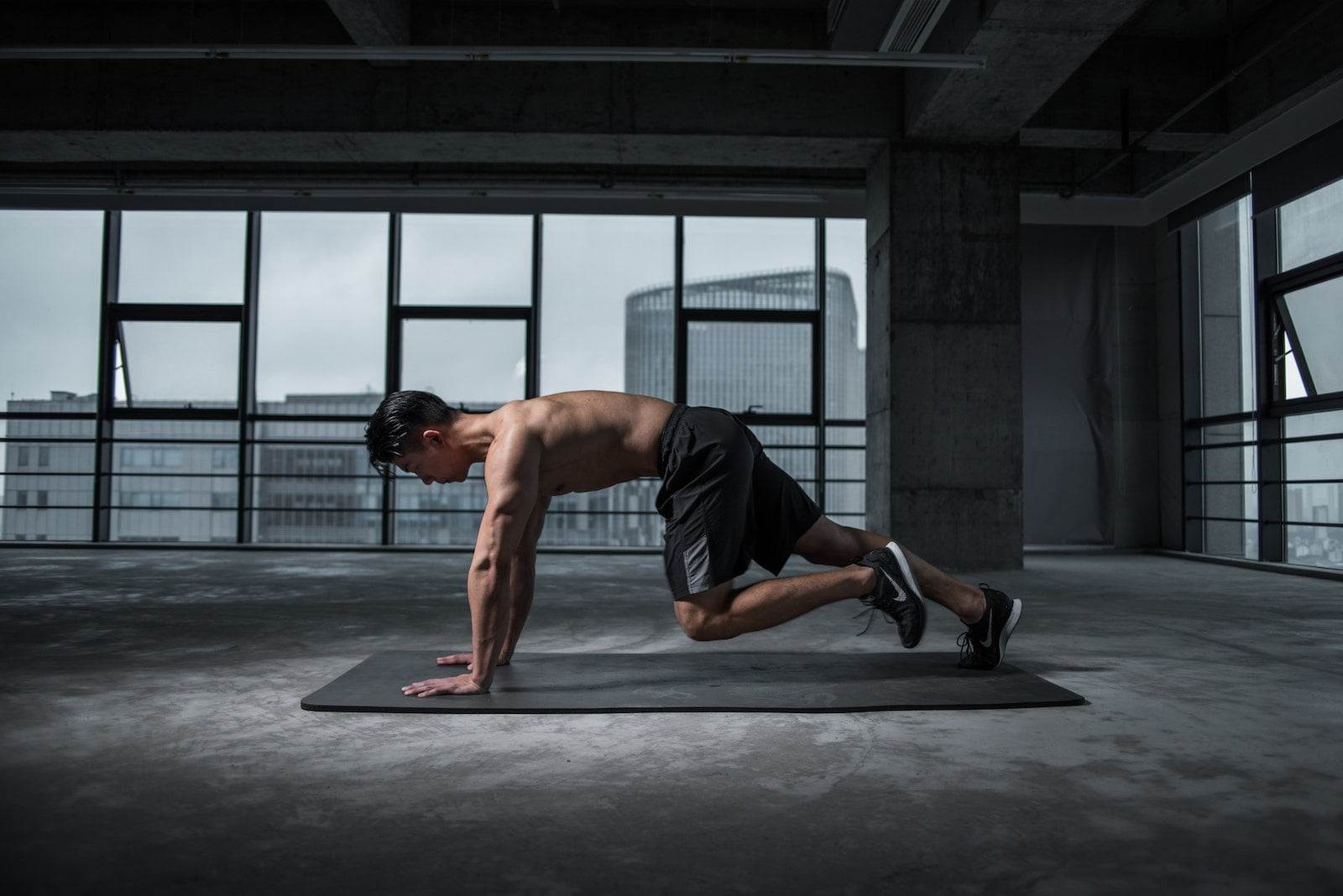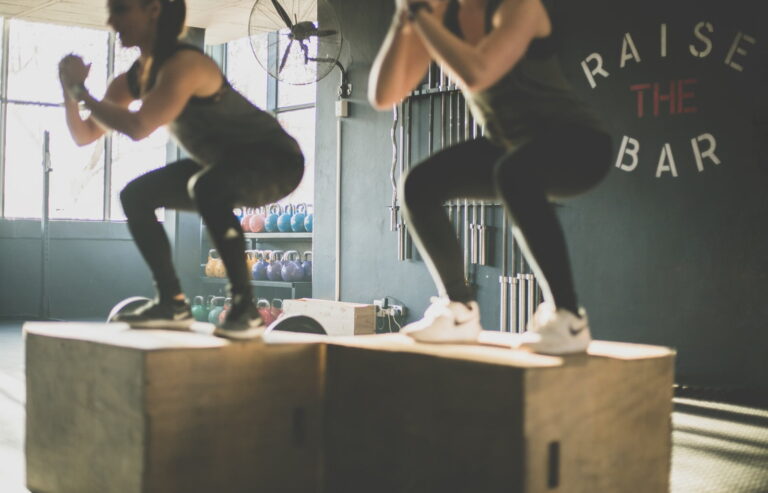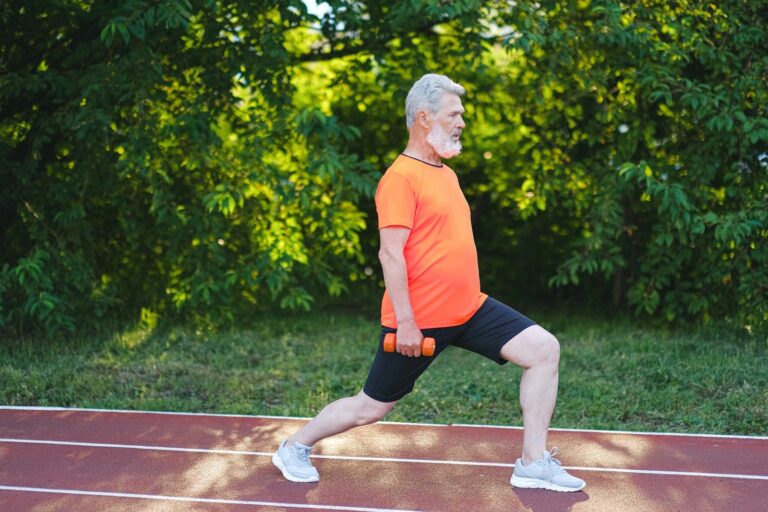Table of Contents
Introduction: The Power of Plank Exercises
Plank exercises are a staple in fitness routines, renowned for their ability to build core strength and enhance overall fitness. The basic plank position lays the foundation for numerous plank variations that target different muscle groups. By incorporating plank variations into a 5-minute full body workout, you can reap the benefits of improved strength, balance, and coordination in just a few minutes each day.
1. Plank Up and Down
Alternating between a high plank and an elbow plank
Targets: core, arms, and shoulders
Steps:
- Start in a high plank position with your hands shoulder-width apart and your feet hip-width apart. Your body should be in a straight line from head to toe.
- Lower your right forearm to the ground, followed by your left forearm, so that you’re in a forearm plank position.
- Push your right hand into the ground, followed by your left hand, so that you’re back in the starting high plank position.
- Repeat the movement, leading with your left arm this time.
Continue alternating between high plank and elbow plank for the desired number of repetitions or time.
Tips:
- Keep your core tight throughout the movement to avoid arching your back or sagging your hips.
- Keep your shoulders directly over your wrists to avoid putting extra strain on your wrists and shoulders.
- Breathe out as you lower down into a forearm plank and breathe in as you push back up into a high plank.
- Try to maintain a stable plank position as you move up and down, without wobbling or shifting your weight too much.
2. High Plank Knee Pulls
Knee pulls toward elbow
Targets: abs, obliques, and hip flexors
Steps:
- Start in a high plank position with your hands shoulder-width apart and your feet hip-width apart. Your body should be in a straight line from head to toe.
- Engage your core and bring your right knee towards your right elbow, keeping your foot off the ground.
- Hold for a second and then return your right leg to the starting position.
- Repeat the movement with your left knee towards your left elbow.
Continue alternating knee pulls for the desired number of repetitions or time.
Tips:
- Keep your core tight throughout the movement to avoid arching your back or sagging your hips.
- Keep your shoulders directly over your wrists to avoid putting extra strain on your wrists and shoulders.
- Breathe out as you pull your knee towards your elbow and breathe in as you return to the starting position.
- Start with a small range of motion and gradually increase as you get comfortable with the exercise.
3. Elbow Plank & Hip Twist
Elbow plank with a hip twisting
Targets: abs, obliques, and hip flexors
Steps:
- Start in an elbow plank position with your elbows directly under your shoulders and your forearms parallel to each other on the ground. Your body should be in a straight line from head to toe.
- Engage your core and twist your hips to the right, lowering your right hip towards the ground without touching it.
- Hold for a second and then return to the starting position.
- Repeat the movement, twisting your hips to the left this time.
Continue alternating hip twists for the desired number of repetitions or time.
Tips:
- Keep your core tight throughout the movement to avoid arching your back or sagging your hips.
- Keep your elbows directly under your shoulders to avoid putting extra strain on your shoulders.
- Breathe out as you twist your hips and breathe in as you return to the starting position.
- Try to maintain a stable plank position as you twist your hips, without wobbling or shifting your weight too much.
- To make the exercise easier, you can perform the hip twists from a high plank position instead of an elbow plank.
4. Plank Bird Dog
Lift left arm, and right leg off the ground
Targets: abs, back muscles, and glutes
Steps:
- Start in a high plank position with your hands shoulder-width apart and your feet hip-width apart. Your body should be in a straight line from head to toe.
- Engage your core and lift your left arm and right leg off the ground, keeping them straight and parallel to the ground.
- Hold for a second and then lower your left arm and right leg back to the ground.
- Repeat the movement, this time lifting your right arm and left leg off the ground.
Continue alternating between lifting your arms and legs for the desired number of repetitions or time.
Tips:
- Keep your core tight throughout the movement to avoid arching your back or sagging your hips.
- Keep your shoulders directly over your wrists to avoid putting extra strain on your wrists and shoulders.
- Breathe out as you lift your arm and leg off the ground and breathe in as you lower them back down.
- Try to maintain a stable plank position as you lift your arm and leg, without wobbling or shifting your weight too much.
- Focus on keeping your body in a straight line and avoid rotating your hips or shoulders too much as you lift your arm and leg.
5. Reverse Plank Kick
Lifting and lowering your legs while maintaining a reverse plank position
Targets: glutes, hamstrings, and quads
Steps:
- Sit on the ground with your legs extended in front of you and your hands placed behind your hips, fingers pointing towards your feet.
- Lift your hips off the ground, creating a straight line from your head to your heels.
- Engage your core and lift your right leg off the ground, keeping it straight.
- Kick your right leg forward, then bring it back to the starting position.
- Repeat the movement, this time kicking your right leg to the side.
- Lower your right leg back to the ground and repeat the entire movement with your left leg.
Continue alternating between kicking your legs forward and to the side for the desired number of repetitions or time.
Tips:
- Keep your core tight throughout the movement to avoid sagging your hips or arching your back.
- Keep your shoulders down and away from your ears to avoid straining your neck.
- Breathe out as you kick your leg and breathe in as you return to the starting position.
- Try to maintain a stable reverse plank position as you kick your leg, without wobbling or shifting your weight too much.
- Focus on keeping your legs straight and avoid bending your knees as you kick.
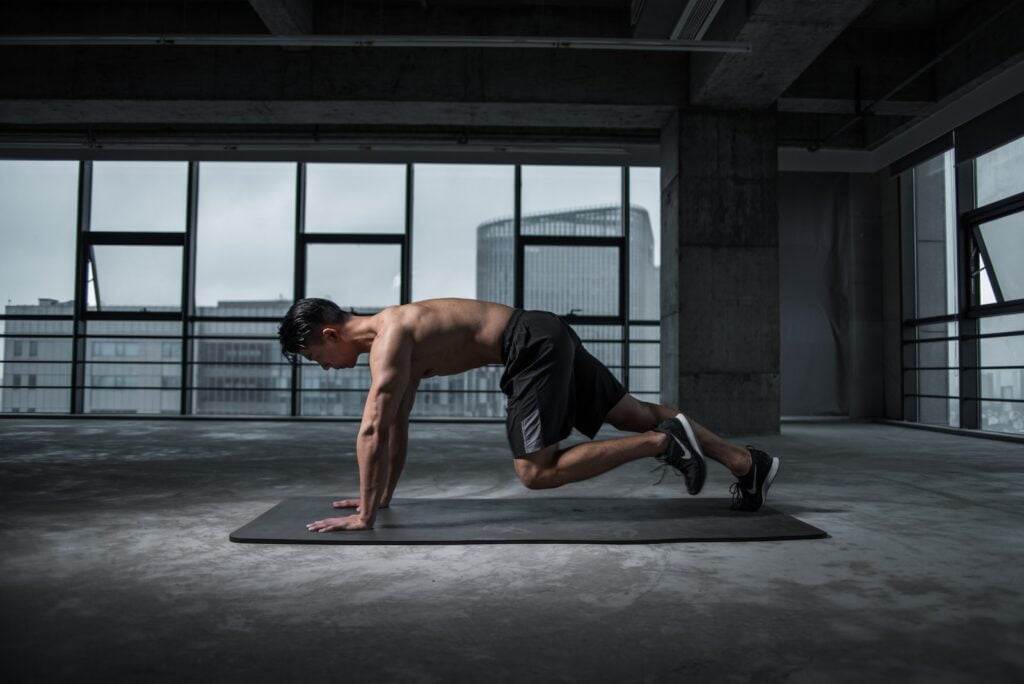
5-Minute Full-Body Plank Variations Workout Plan
- Plank Up and Down (1 minute)
- Begin in a high plank position
- Bend your left elbow, then your right elbow, transitioning into an elbow plank
- Straighten each elbow in turn, returning to the starting position
- High Plank Knee Pulls (1 minute)
- Start in a high plank position
- Pull in your right knee, then your left knee, alternating knee pulls
- Elbow Plank & Hip Twist (1 minute)
- Start in an elbow plank position
- Lower your hips to the right, then to the left, keeping your upper body still
- Plank Bird Dog (1 minute)
- Begin in a high plank position
- Lift your left foot and extend your right arm in front of you
- Alternate lifting your right foot and extending your left arm
- Reverse Plank Kick (1 minute)
- Sit on your mat with your legs outstretched
- Lift your hips into a reverse plank position
- Raise and lower your legs alternately, adding a kicking motion
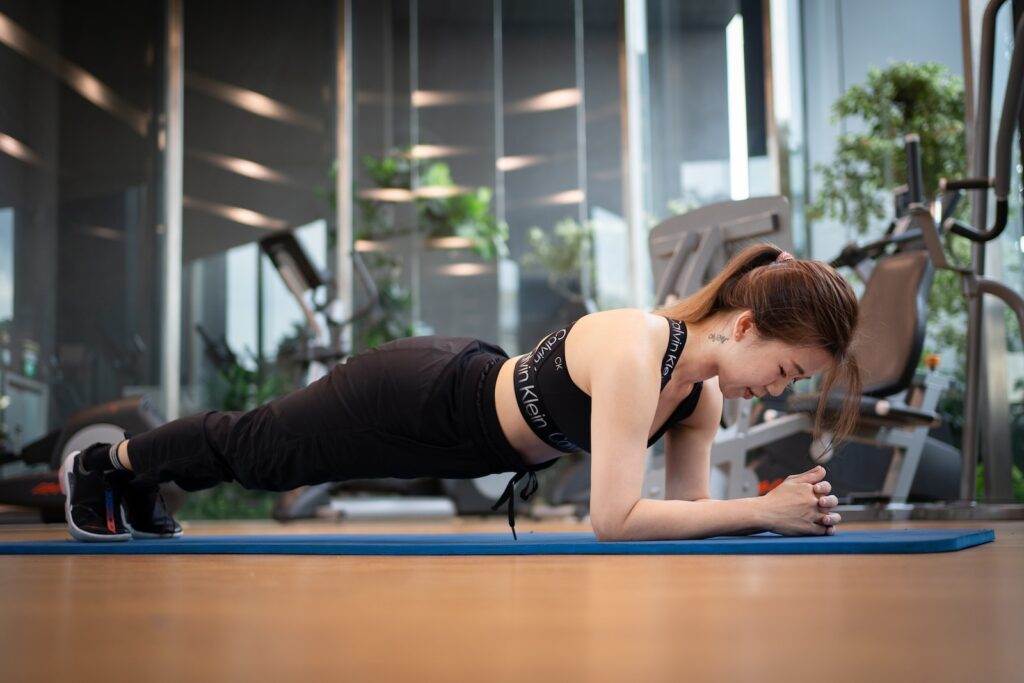
Plank Exercises for Fitness Objectives
Incorporating plank exercises into your daily fitness routine can be instrumental in achieving various fitness goals, such as weight loss and improved athletic performance. The following points highlight how planks plank variations can contribute to these goals:
Weight Loss:
- Calorie Burning: Performing planks and plank variations engages multiple muscle groups simultaneously, increasing overall energy expenditure and contributing to calorie burning.
- Core Strengthening: A strong core is essential for maintaining proper posture and supporting various physical activities. Plank exercises target your core muscles, which can help improve your metabolic rate and promote weight loss.
Improved Athletic Performance:
- Increased Stability: Plank exercises, such as the elbow plank bird dog, help improve balance and coordination, which are crucial for enhancing overall athletic performance.
- Functional Strength: Planks and plank variations contribute to the development of functional strength by engaging various muscle groups, including the core, upper body, and lower body. This increased strength can lead to improved performance in various sports and physical activities.
By incorporating a variety of plank variations into your fitness routine, you can work towards your weight loss and athletic performance goals more effectively. Remember to prioritize proper form and consult with a fitness professional if you have any concerns or questions.
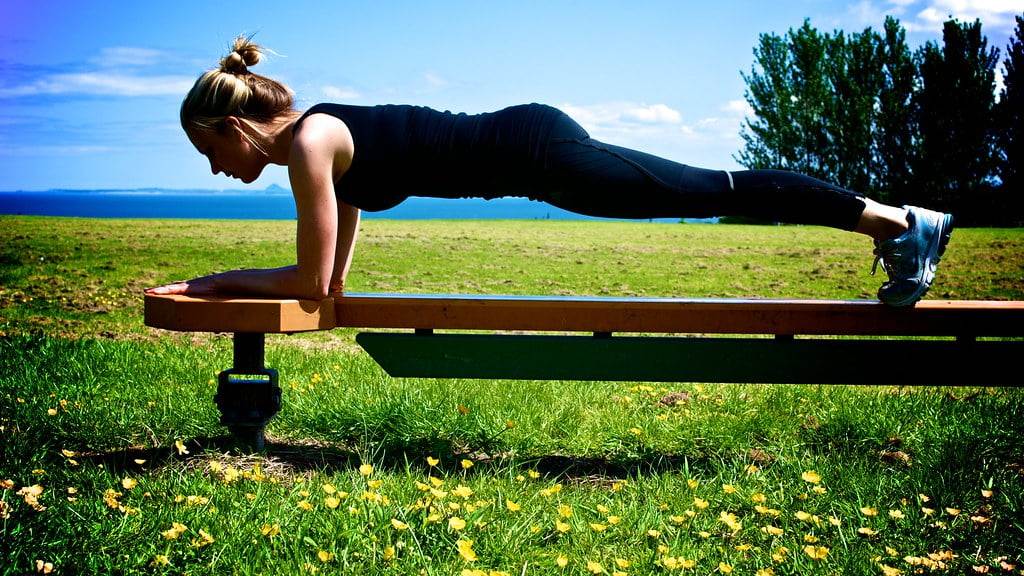
Conclusion: Embrace the Plank Revolution
Incorporating these plank variations into your daily routine can provide numerous benefits, targeting various muscle groups and focusing on balance, coordination, and strength. With consistency and proper form, these plank variations offer a comprehensive workout in just five minutes a day. Begin today and plank your way to a stronger, fitter you!
FAQs
Can I perform these plank variations if I am a beginner?
Yes, these plank variations are suitable for individuals of all fitness levels, including beginners. If you find some of the exercises challenging initially, you can modify them or reduce the duration until you build the necessary strength and endurance.
How often should I do these plank variations?
Ideally, you should aim to perform these plank variations daily as part of your fitness routine. However, you can adjust the frequency based on your personal preferences, goals, and schedule.
Can I perform these plank variations in a different order?
Absolutely! You can rearrange the order of the exercises to create a workout that best suits your needs and preferences. The key is to ensure that you are engaging all the targeted muscle groups and maintaining a balanced approach to your workout.
Can I do these exercises without a mat?
While it is possible to perform these exercises without a mat, using a mat is recommended for added comfort and to prevent slipping during the workout. If you don’t have access to a mat, you can use a towel or a soft surface as an alternative.
How long does it take to see results from these plank variations?
The time it takes to see results may vary based on factors such as your starting fitness level, consistency, and overall lifestyle. However, with regular practice and a balanced approach to fitness and nutrition, you should begin to notice improvements in strength, endurance, and muscle tone within a few weeks.
Can I combine these plank Variations with other workouts?
Yes, these plank variations can be combined with other workouts to create a comprehensive fitness routine. You can mix them with cardiovascular exercises, strength training, or flexibility exercises to achieve a well-rounded approach to your overall health and fitness.
